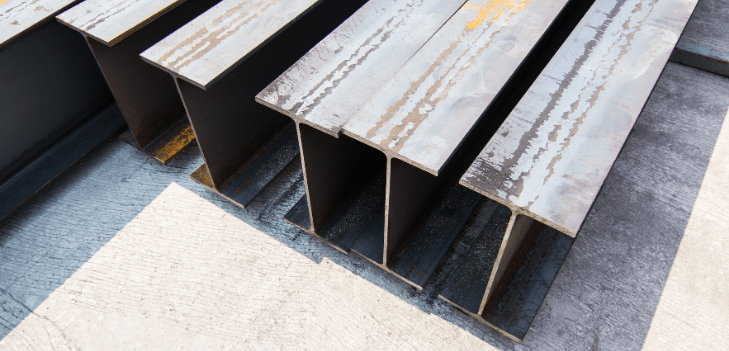Steel Beams are a fundamental structural element that primarily transfers load in flexure and bending. Beams normally transmit vertical gravity force but can also carry horizontal loads in the event of an earthquake. The process of carrying the load in a beam is unusual; similar to the load carried by a beam, the force is transferred to nearby structural compression components via walls, columns, or supports. For the best quality steel beams, go to Stealth Pipe and Steel.
A steel beam is a component of a structure that resists loads applied along the axis of the beam. Twisting is the main mechanism of redirection. The loads are applied to generate Response forces at the beam’s support points. The overall impact of many forces operating on the beam is to generate shear forces and bending moments within the beam, which cause deflections, internal stresses, and strains.
Beams are distinguished by their aid, profile (cross-sectional form), equilibrium conditions, material, and length of steel beam materials. Steel Beams are also descriptions of structural designing components. Still, any structures that contain beam structures designed to carry lateral loads, such as machine frames, aircraft components, automotive automobile frames, and other mechanical or basic frameworks, are analyzed similarly.
Benefits of steel beams
- Termites and rodents cannot attack beams.
- They are used to test buildings for weather damage.
- Beams are used to support roof structures as well as house casings.
- Beams may be customized to your specifications.
- Beams provide the sole criterion for structural integrity and, hence, safety.
- There will be no breaks since steel can withstand enormous amounts of tensile stress.
- Steel Beams are fire and corrosion-resistant.
Types of steel beams according to support
- Fixed beams
These are held together at the ends but cannot be rotated.
- Simply supported beams
These beams are supported at the ends and may spin freely.
- Over-hanging beams
On one side, this type of beam goes beyond its support.
- Double over-hanging beams
On both ends, they protrude beyond the supports.
- Continuous beam
Extends to accommodate two or more supports
- Cantilever
Fixed at one end but extending outwards
- Trussed beam
This beam is strengthened with a rod or cable to form a truss.
A thin-walled steel beam is a very useful type of bar construction. The cross-section of thin-walled beams comprises thin panels joined together to form closed or open cross-sections of a beam construction. Closed sections with typical shapes include rectangular, circular, square, and tubes. L-beams, T-beams, I-beams, and other open sections are examples. Thin-walled beams exist because their bending solidity per unit cross-sectional zone is much higher than that of strong cross segments like rods or bars.


Comments are closed.